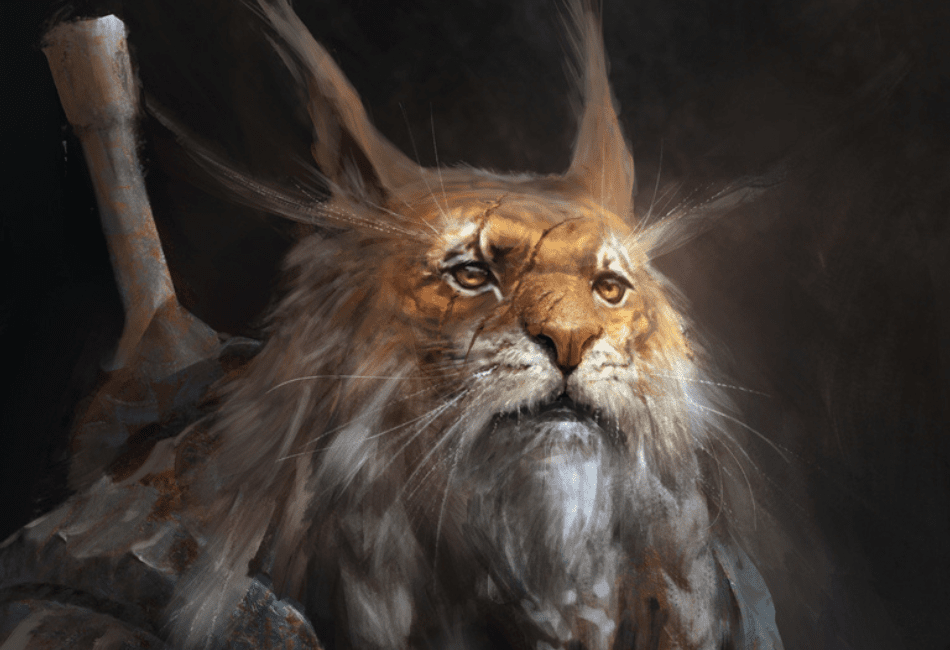You were thrilled when you first killed a Rakshasa. It was a new enemy to mark off the list, something you could boast about to your fellow party members and to whoever would listen at the Tavern. You felt a great deal of pride over it at first until it returned.
You didn’t even realize it was the Rakshasa at first. It disguised itself like one of your other party members. It lured you outside, away from everything, away from your weapons. And then it struck. A knife to the gut and a flicker of its image revealed your mistake.
Had your party members not suddenly appeared, rushing to your rescue (you aren’t sure how they knew, but you’re grateful), you would have died that night. Over the next few days, you and your party relentlessly searched for a solution on how to escape this Rakshasa or how to kill it off for good.
Some told you to drop everything and run for the rest of your lives, but one told you to travel to the Lower Planes. You were told to travel to the Nine Hells and strike the Rakshasa down where it formed and grew, preparing for rebirth.
It was extreme at first, and you all refused to. After the fourth attack of the star of this Rakshasa 5e guide, your group gave it. Together you and your party dove into the world of Devils and Fiends in search of your target and your freedom, no matter the cost.
Cut to the Chase
- CR 13
- Proficiency Bonus +5
- AC 16
- HP 110 (13d8 + 52)
- Speed 40 feet
- STR 14 (+2) DEX 17 (+3) CON 18 (+4)
- INT 13 (+1) WIS 16 (+3) CHA 20 (+5)
- Deception +10, Insight +8
- Passive Perception 13, Darkvision 60 feet
- Vulnerable to Piercing from Magic Weapons wielded by Good aligned creatures
- Immune to Bludgeoning, Piercing, and Slashing from Nonmagical Attacks
- Speaks Common and Infernal
- Some magic detection immunity
Soft Kitty, Warm Kitty, Little Ball of Fur!
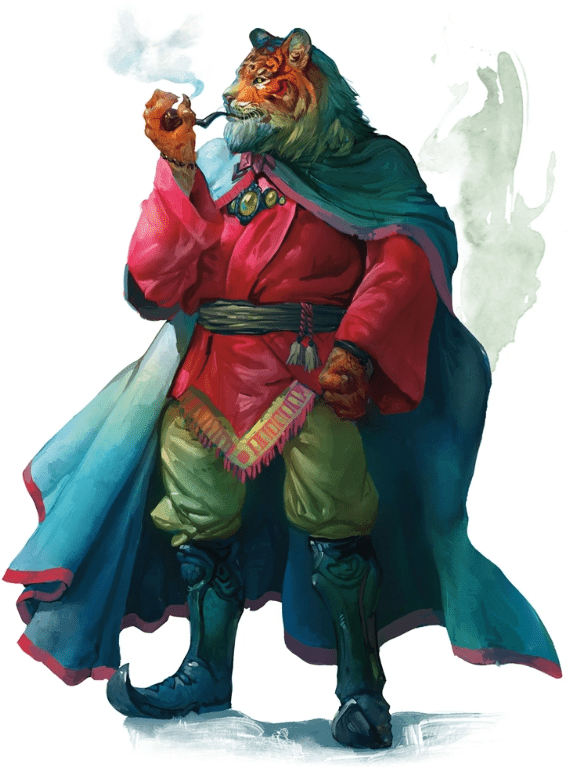
Rakshasas are Fiends, commonly depicted as bipedal humanoid tigers. At first glance, you may be able to brush them off as a reskinned Tabaxi, but there is a prominent distinguishing factor between the two races: their hands. Where Tabaxis have “normal” hands, where their palms face inward, just as ours do, a Rakshasa’s hands have the palms facing outward.
As for their fur, I can’t actually speak to how soft it is. I’m certain that a Rakshasa would cut off your hand before it could even brush their silky-smooth-looking fur. Real tigers sport rough exterior coats with soft and fluffy undercoats, so I like to entertain the idea that holds true for Rakshasas.
As wanderers, however, it’s safe to assume that there is probably a fair amount of dirt underneath that brilliant fur that would make it feel rough and oily unless you could get to their undercoat. According to the 4e Monster Manual, Rakshasas will almost always wear the finest clothes, most precious gems, and jewelry.
These ideas aren’t stated outright in the 5e Monster Manual, but from the artistic depiction on page 257, it’s safe to assume that these ideas were carried into 5e.
Into the Tiger’s Den
Although there is bountiful lore for the 2e and 4e, Dungeons and Dragons 5e didn’t expand much on Rakshasas or introduce much lore. From what was established in 5e, Rakshasas originated in the Nine Hells. They are born of powerful devils who freed their essence from the physical bodies through a dark ritual.
With their essence freed, they escaped the Lower Planes and entered the Material Plane in humanoid flesh. Few will ever see their true forms as they can take on the guise of anything and everything they desire, whether that be a noble, clergyman, or peasant guise. Once they reach the Material Plane, they seek out humanoid flesh and carry out devious plans and schemes to fulfill their own appetites.
If they die on the Material Plane, Rakshasas have an agonizing and torturous return to the Nine Hells. There, their essence is trapped until their physical body reforms, taking either months or years until it is ready. Once reborn, the Rakshasa keeps all memories and knowledge of its previous life on the Material Plane and will relentlessly seek retribution against the being who slew its mortal form.
If it cannot reach its murderer, a Rakshasa may go after its target’s friends and family instead. However, if they are killed while in the Nine Hells, you can destroy a Rakshasa forever and free yourself and those around you from its murderous wrath.
Curiosity Killed the Cat
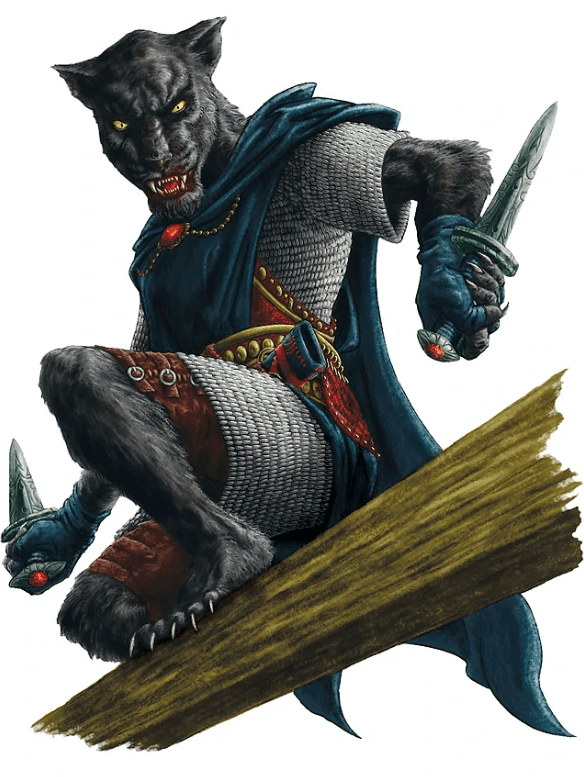
Curiosity may have killed the cat, but a thirst for vengeance brings it back. The main goal of a Rakshasa is to seek out humanoid flesh and to carry out evil schemes and plots. It seeks to sew discord and destroy everything it can, usually discreetly. However, if you happen to be the one who killed a Rakshasa, as soon as they have formed again, they will have a new goal: seek out and destroy you or everything you have ever loved and cared about.
If this is the case, you better run and never look back, or you can find where the Rakshasa’s essence is being housed in the Nine Hells and destroy it before it can be reborn. If done so successfully, you will free yourself from the wrath of the Rakshasa, and you will no longer be chased by it.
If you do so, however, it’s best to ensure that you don’t wrong another Rakshasa. The Nine Hells is not a pleasant place, and I can’t imagine making multiple trips to visit it would be much better.
Cat-Like Confidence
Their cat-like confidence is well deserved. They feel better than most, and when you look at their stat block, they are. At the very least, they’re better than most non-adventurers. These deadly cats have a CR of 13, making them deadly for any party that isn’t either big enough or leveled up high enough.
Rakshasas are considered to be Medium Fiends with a Lawful Evil classification. They have an Armor Class of 16 (without armor) and a standard of 110 hit points or 13d8 + 52. They have a base speed of 40 feet, allowing them to be faster than most people on the battlefield, sans the monk… maybe.
Even their base stats are pretty high ranking without any apparent weakness.
- STR 14 (+2) DEX 17 (+3) CON 18 (+4)
- INT 13 (+1) WIS 16 (+3) CHA 20 (+5)
Attacking them with spells where they may need to make an Intelligence saving throw isn’t a bad idea, but the fact that they can’t be affected by spells of 6th level or lower throws is a bit of a wrench into the plan. It’s best just to fight them with Melee weapons.
In terms of Weapons, however, you become even more limited. Although vulnerable to Piercing damage from a Magic weapon wielded by a Good aligned creature, they are immune to any kind of damage (Bludgeoning, Piercing, and Slashing) from any Nonmagical Attack.
So, unless you’re certain you can fend off a Rakshasa for long enough, it tires out, or you can kill it, don’t anger one. It will go poorly, and you will probably die.
Cursed Claws
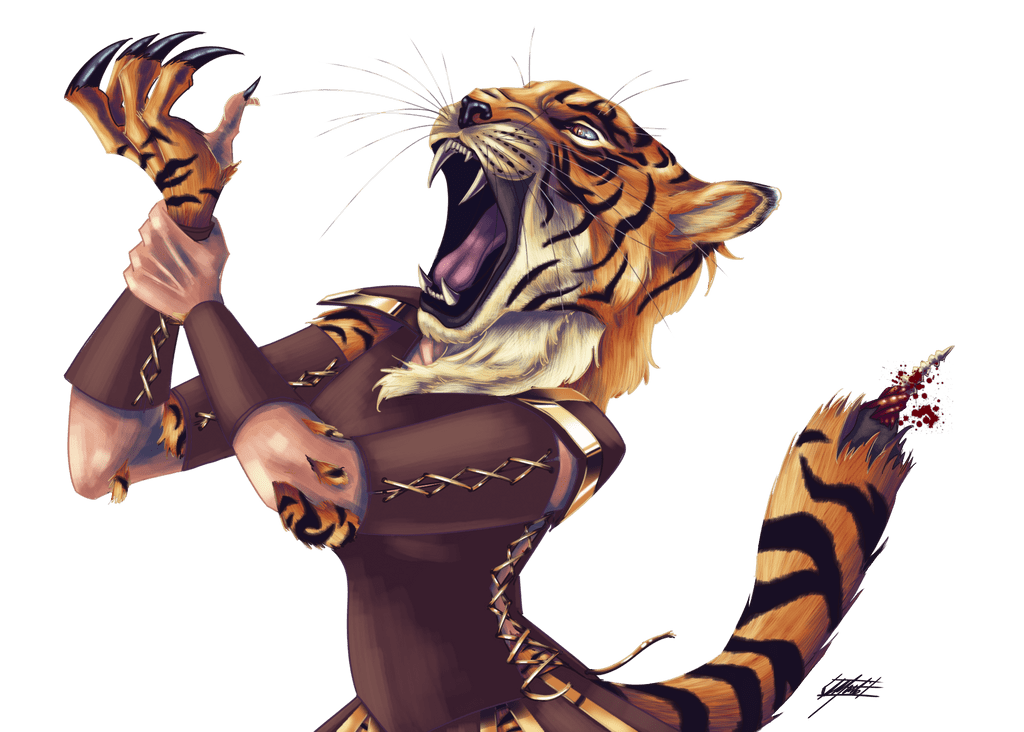
| Limited Magic Immunity | The Rakshasa can’t be affected or detected by any spells of the sixth level or below unless it desires to be. It has advantage on any saving throws against every other spell and magical effect. |
| Innate Spellcasting | Rakshasas have access to several innate spells. Their Spell Casting Ability is their Charisma. Their Spell Save is DC 18 with a +10 to hit with their Spell Attacks.
None of the spells they innately cast require material components. At-Will: Detect Thoughts, Disguise Self, Mage Hand, Minor Illusion 3 times a day: Charm Person, Detect Magic, Invisibility, Major Image, Suggestion 1 time a day: Dominate Person, Fly, Plane Shift, True Seeing |
| Multiattack | A Rakshasa can make two claw attacks. |
| Claw | Melee Weapon Attack
+7 to hit, five-foot reach Single target Hit: 2d6+2 slashing damage. If the target is a creature, it becomes cursed. This magical curse takes effect when the creature takes a long or short rest. It fills the target’s thoughts and dreams with horrible images. The cursed target gains no benefits from their rest. This curse lasts until it is lifted by a Remove Curse spell or something similar. |
Fighting a Rakshasa seems like a literal nightmare. Whether you get hit or not, it is a lose-lose situation until a remedy is made for the situation. If you win the battle, the Rakshasa returns and hunts you down. You won’t even realize if you got hit in the battle until you try to rest.
If your party is like any of mine, you don’t rest unless it is absolutely needed. So to suddenly discover that you need a Remove Curse spell can be a complete and utter pain in the neck. More than that, you’re fighting a spellcaster who can easily be Melee and deal severe damage.
If you aren’t fighting it up close and personal with Melee attacks, it becomes much harder to fight and wastes many high-leveled spell slots. The only ones who thrive in this situation are the Rangers or long-distance Rogues.
Become the Predator
With the stat block laid out and the danger of the situation presented, it’s worth asking if playing or facing a Rakshasa is even worth it or rewarding.
Players
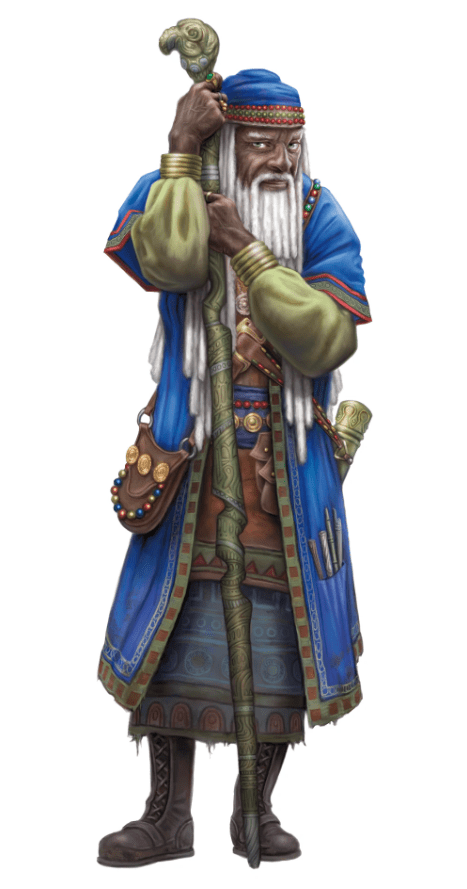
In the standard campaign, you’re likely playing Good-aligned characters or Neutral-aligned characters. Because of this, a Rakshasa likely wouldn’t fit in. They are unequivocally evil-aligned. They thrive on evil actions and eating human flesh, so you probably won’t get away with playing one.
If you can spin it into a Drizzt Do’Urden situation where you have a typically “evil” character who is now good, I give you kudos. For now, we’ll work under the premise that you’re playing in an Evil Alignment campaign.
These campaigns are fun, but they are often short-lived. Wizards of the Coast doesn’t present many typical Evil races players can use. However, some D&D fans have already taken the liberty of making a Homebrew Race.
This Homebrew Race is a bit nerfed from the Monster Manual Rakshasa, but it seems an absolute joy to play. The Homebrew presents two types of Rakshasa: The Maya Rakshasa and the Asura Rakshasa.
Maya Rakshasa
With this subrace, your Dexterity increases by one. You are an innate illusionist and know the Minor Illusion cantrip. Upon reaching level three, you can cast Alter Self once per long rest. After reaching the fifth level, you can cast Major Image once per long rest. Charisma is used as your spellcasting ability.
Asura Rakshasa
Your Constitution increases by one. Your claws are natural weapons and can be used to make unarmed strikes. If you hit a target with them, you deal slashing damage worth 1d6 + your Strength or Dexterity Modifier.
You have an ability called Savage Attacks. If you roll a critical with a Melee Weapon Attack, you can roll one of your weapon’s damage dice one more time and add it to the extra damage of the critical.
Both
You gain certain perks, regardless of which subrace you take for this Homebrew. Your Charisma increases by two. You gain proficiency in Deception and have advantage on all Intelligence, Wisdom, and Charisma Saving Throws against Magic Attacks.
Both races also have access to the Friends Cantrip. At third level, they can cast Detect Thoughts; at fifth level, they can Cast Suggestion. Both spells gained upon leveling can only be cast once per day.
Dungeon Masters

For Dungeon Masters, it’s easier to play a Rakshasa. You don’t need to go and find a Homebrew Race, but you might have to do a bit more math if you decide to manipulate the stat block for a Rakshasa. Before you go and throw them into your game, however, consider the ramifications of it. Putting a Rakshasa that your players have to kill into your game is an excellent way to drag them into the Nine Hells, assuming you provide the proper information on how to permanently kill one.
If you want your players to end up in the Nine Hells and get into some shenanigans down there, I probably wouldn’t put a Rakshasa into your game. Unless you decide to mess around with the lore a bit more and change things up. Rakshasas don’t necessarily have to be born into the Nine Hells. If you want a campaign where delving down into the Lower Planes isn’t necessary, consider bringing in the idea of a Rakshasa being able to bind their essence to an object on the Material Plane.
As long as that object or thing is well off or is not destroyed, they can continuously come back to life and keep hunting your party. It may send them on a bit of a search quest, but that’s never a bad thing, especially if you want them to explore the world. Of course, this all depends on your players wanting to fight a Rakshasa and understanding that it will keep coming back.
FAQs
Question: Are Rakshasa’s Devils?
Answer: Technically, yes. Once they’ve released their ‘essence’ and have entered the Material Plane, however, they become classified as Fiends.
Question: Why do Rakshasa have backwards hands?
Answer: The idea originates from the Indian mythology of Rakshasa. The backwards hands allow mortals and those on the Material Plane to identify them. Regardless of their form, you can always identify a Rakshasa based on their hands. As such, most will hide them.
Question: Can Divine Sense detect a Rakshasa?
Answer: Yes, actually. Despite Rakshasas having a Magic Immunity to any detection spell sixth level or below, Divine Sense is not technically a spell. As such, even a level one Paladin could detect the presence of a Rakshasa. Even though you probably don’t want to face one while you’re at level one, the ability to sense a strong evil would help you to avoid confronting one or potentially angering it.
Time for a Cat-Nap
Rakshasas are exciting enemies in the world of D&D. They don’t have a lot of lore attached to them in 5e, but that just allows Dungeon Masters and players to have more fun with them. More interestingly, they aren’t a race that is easily shifted to “good.”
They are built on a foundation of evil and hatred, and trying to shift them away from that becomes increasingly difficult. Born as Devils who need to free themselves via dark magic, they aren’t comparable to a Drow who may suddenly gain a conscious and realize that their society is in the wrong.
Regardless, they are a fun option if you decide to play them in a short Evil-Alignment campaign. Despite the nerfing in the Homebrew race, it’s probably for the best. When they’re an NPC, they’re an absolute nightmare to fight, and they will literally give you nightmares even after you have beaten them.
If you want to play a cat race, opt for something like a Tabaxi or a Felix. Both allow you to live your best life without having to be intentionally evil and horrible to everything and everyone around you. Rakshasas are the evilest and baddest of cats in all Dungeons and Dragons 5e.
- Hand Crossbow 5e Guide – For Everyone but Druids and Wizards - December 16, 2022
- Compelled Duel 5e Guide - November 14, 2022
- Heavily Obscured 5e Guide – The Ins And Outs Of The Dark - October 31, 2022

